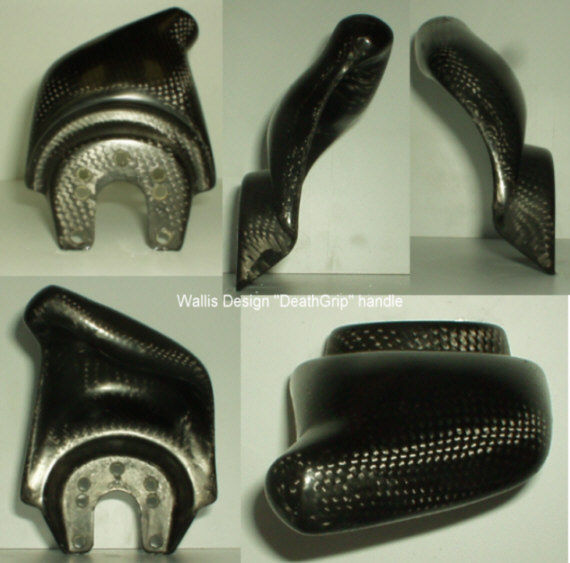Present wrist and arm problems have caused me to think about designing an ergo handle for MUni/ trials.
Pardon the following long-winded presentation, I did the best I could to make my point clear. I am looking for riders to answer with either technical expertise, and/or knowledge of how the muscles of the forearm and hand work in concert.
I did a search on handles and found only the stuff on Coker stuff, which doesn’t help me here.
Has anyone tried to build a handle that feels more relaxed to the hand? I ride most of the time left hand linked to the handle, but at times, I do use my right hand, but it isn’t my strong side.
If I sit on my MUni and relax my left arm and let it meet the handle (Miyata style), my left wrist is rotated slightly to the left. If I was holding a metal post in my hand, I guess, that it would be pointing to 2:00 o’clock and slightly upward. Grabbing the Miyata handle, forces the wrist to rotate to the right and then you have to move the top of the nuckles almost level(parallel) with the top of the seat handle. This seems like an unnatural position for the wrist and hand. Why not design a handle that matches the more natural wrist/hand position – that which I refer to as the two o’clock position.?
I think the Reeder handle sort of does, this, but from looking at the images on unicycle.com, it doesn’t point upward, but more or less horizontal.
Then there is the GB4 handle for Cokering or 29ing. But from looking at the pictures at unicycle.com, this handle points away from the rider. I was looking more for something that might be sort of a Reeder handle style, but pointed more upward to a more natural position.
So, has anyone built a handle as I have mentioned - that ‘s assuming you can visualize the configuration from my description?
Now, for the next part, I wonder what stresses would be placed on the elbow and shoulder when doing MUni or trials compared with using existing (Miyata style)handle designs. IMHO, while the current Miyata style handle design places my hand/wrist in an unnatural position, it does seem to however, create a solid muscle platform from which to direct the movement of the uni when hopping or gapping. But it does IMHO present problems for the muscles on the top of the fore arm and hand.
1 )If a newer more ergo design was used, would the muscle platform be the same, stronger or weaker and would more stress be placed on the elbow and maybe even the shoulder with the newer ergo design?
In summary, I am looking for answers to the above question #1 and number 2 (below).
- Does anyone have a handle like this, knows anyone who can make it, and can share any experience with it?
I won’t even consider mounting a brake handle on this new style of ergo handle at this point. Let’s keep that out of the discussion for now.
Thanks,
